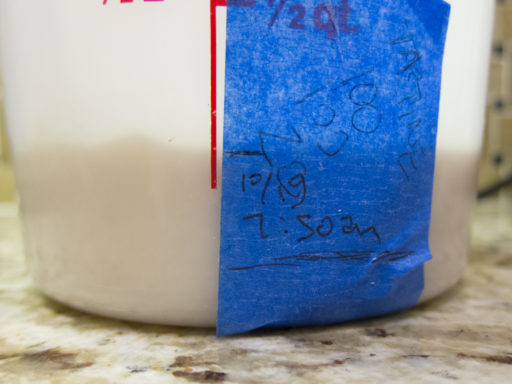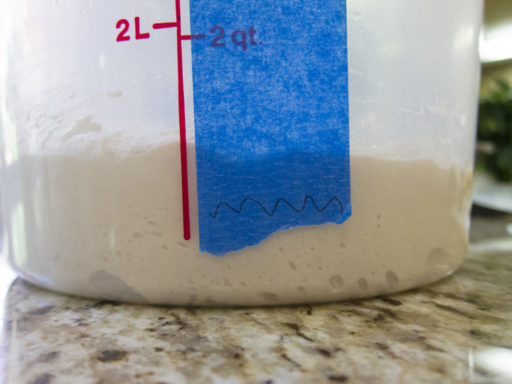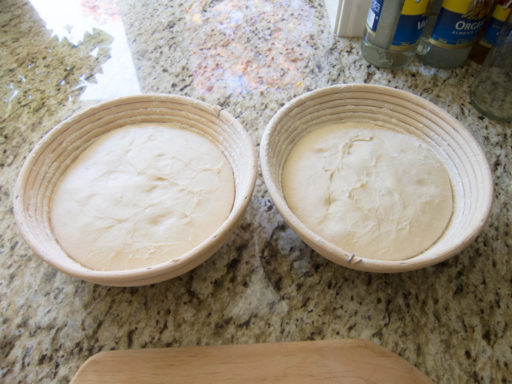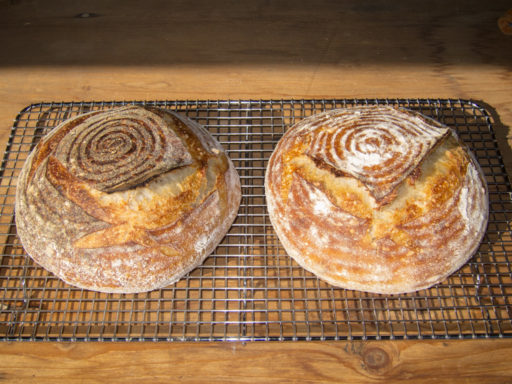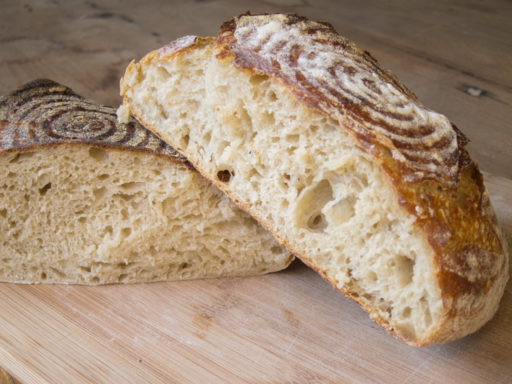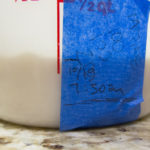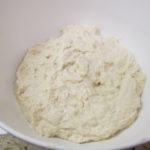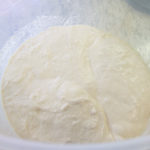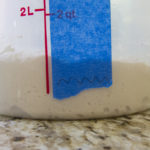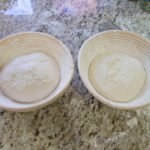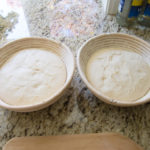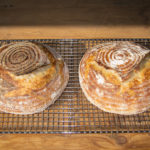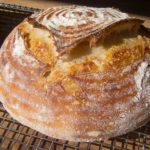Loaf 63 – Tartine Sourdough
On to something new! Now that I’m getting confident with my sourdough, I decided to try the Tartine approach to sourdough. I followed the directions from Chad Robertson’s Tartine Bread for the basic country bread as close as possible.
I started by feeding my starter the night before. Usually I use 50% starter, 100% flour and 100% water, but for this recipe he calls for 20% starter, 100% flour and 100% water. It behaved beautifully, about doubling overnight (10 hours in a cool kitchen).
The next morning at 8:00am I mixed the flour (100%, 609g), water (75%, 457g) and starter (20%, 122g). That mixture rested for 30 minutes and then I added the salt (2%, 12g) and another 12g of water. I realized that I was supposed to hold back some of the water from the first mixing to add with the salt, but didn’t do that, so I added just a bit more water with the salt to help dissolve it.
Chad (I’ve never met him but feel like he’s my friend) recommends a 75 to 80° environment for rising the dough but my kitchen is about 70° in the morning. I heated my pizza stone for ten minutes in one oven, then moved it to a cooler oven. Happily, the temperature in the second oven quickly stabilized to right around 80°. I put the tub of dough in that oven for then next 3½ hours, giving the dough a turn (like a stretch and fold) every ½ hour. It rose about 50% which is right on track.
I divided the dough and shaped it into rough boules at noon. After another ½ hour I re-shaped the boules and put them into round bannetons. I then repeated the pizza stone in the oven trick to get it back up to a bit over 80° and let the loaves proof for almost another four hours.
Chad recommends using a Dutch oven to cook the loaf, so I took the opportunity with two loaves to compare the Dutch oven approach and my steaming oven technique (which I also did for Loaf 46). At 4:16 I started one loaf in a 500° oven on a pizza stone, lowering the temp to 450° and adding a cup of water to a broiling pan in the bottom of the oven for steam. I vented the steam at 4:35 and took it out of the oven at 4:42 (26 minutes total).
The second loaf used the Dutch oven method. It went into the oven at 4:21 (500° then lowered to 450°), I took the top off the Dutch oven at 4:43 and continued baking until 4:55 (34 minutes total).
Results
Visually the two loaves were very similar. Even though the Dutch oven loaf baked 8 minutes longer, the regular oven loaf was darker.
The flavor of both loaves was wonderful. This is the first time I’ve gotten a real sour flavor to my sourdough. Earlier loaves would have a hint of sour, but this was much stronger. I’m using the same starter, so the additional flavor is likely coming from either 1) using less starter initially, or 2) the much longer development time. I’m very excited about this!
The Dutch oven was the clear winner on texture this time (which was different that my comparison with Loaf 46). The crumb on the Dutch oven loaf was much more open and light. In fact, it was difficult to cut – this loaf was made for tearing apart at the dinner table. The regular oven loaf had a denser crumb and was easier to slice. I’ll have to continue with this comparison in future loaves – I assume that the difference is because of the longer intense steaming time that the Dutch oven loaf had, but it’s possible that I handled the loaves differently.
- Tartine Starter 10 hours after feeding, 8:00am.
- Mixed ingredients, 8:15am.
- After 3 1/2 hours of rise time, 11:55am.
- About 1 1/2 times bigger after 3 1/2 hour rise time, 11:55am.
- Divide dough, pre-shape, rest, shape for bannetons. 12:30pm.
- Another 4 hours of proofing, 4:15pm.
- After baking, 5:00pm. Oven, left. Dutch oven, right.
- Dutch oven loaf.
- Oven loaf.
- Crumb. Oven, left; Dutch oven, right.







